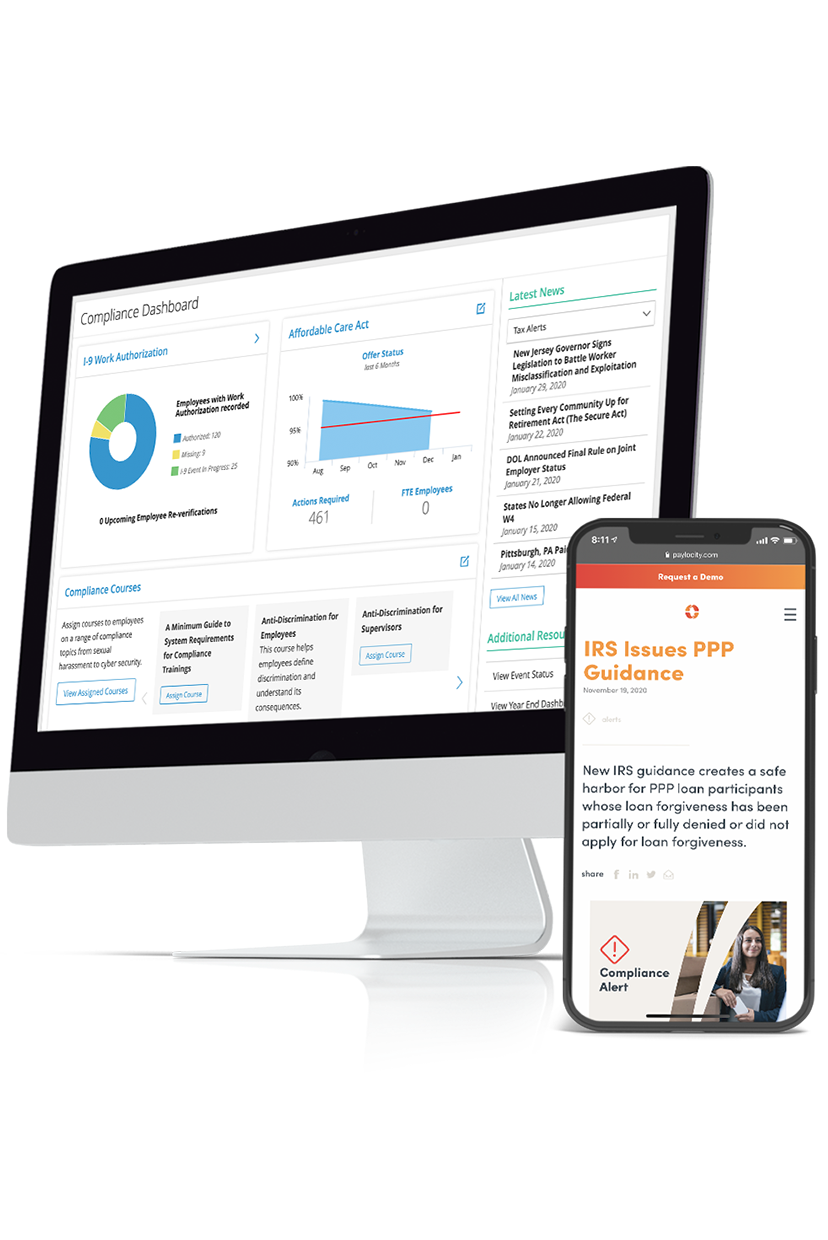resources
Minnesota Paid Family and Medical Leave
June 16, 2023

At A Glance
Effective January 1, 2026:
- Employees will be able to take up to 20 weeks of PFML in a 12-month period
- Contributions will be split between employers and employees
What is Minnesota's Paid Family and Medical Leave Law?
On May 25, 2023, Governor Tim Walz signed HF 2, a Paid Family and Medical Leave (PFML) bill, which will provide employees up to 20 weeks of PFML per year. The program will be administered by a new Family and Medical Benefit Insurance Division (the “Division”) of the Department of Employment and Economic Development (DEED). Contributions will be split between employers and employees and will begin on January 1, 2026.
Minnesota PFML Eligibility
This requirement applies to employers regardless of their size, and regardless of the number of employees located within Minnesota. All employees located within Minnesota, with certain exceptions, will be eligible for PFML benefits if they meet the financial eligibility criteria under the law. Specific seasonal employees are excluded from coverage and self-employed individuals and independent contractors are excluded but may choose to elect to purchase coverage under the program. To be eligible for PFML benefits, an employee must have earned at least 5.3% of the state average annual wage over their base period, which is defined as the most recent four completed calendar quarters before the employee's application for benefits. An employee can aggregate wages earned from multiple employers to satisfy the financial eligibility test.
Employer and Employee PMFL Benefit Contributions
Employers must pay quarterly premiums to the family and medical benefit insurance account on the taxable wages paid to each employee. Beginning January 1, 2026, the employer premium rates shall be:
- 0.7% for an employer participating in both family and medical benefit programs
- 0.4% for an employer participating in only medical benefit programs with an approved private plan for the family benefit program
- 0.3% for an employer participating in only the family benefit program with an approved private plan for the medical benefit program
Employers must pay at least half of the annual premiums. Employees, through a wage deduction, must pay the remaining premium not paid by the employer. Employers may also choose to pay the entire premium of 0.7%.
Employers with fewer than 30 employees will qualify for a small business exemption and will pay a reduced amount, which the fund will absorb; employees at small employers will pay the same as those at larger employers.
Minnesota PFML Benefits
Amount of Leave
An employee may take up to 12 weeks of paid leave for their own serious health condition and up to 12 weeks of paid leave for bonding, family care, safety, or a qualifying exigency. However, employees are limited to an aggregate of 20 weeks of paid leave in a benefit year.
An employee may take leave intermittently for any of the reasons covered under the law. An employer may limit intermittent use of leave to 480 hours in any 12-month period. The employee would be able to take any remaining leave continuously. The minimum duration of benefits is one workday in a work week.
Except for benefits for bonding leave, a claim for benefits must be based on a single qualifying event of at least seven calendar days. The days must be consecutive unless the leave is intermittent.
Payment of Leave
Eligible employees will not receive their full wages for PFML. The state will apply a maximum weekly benefit amount that will be calculated by the Division. An employee’s weekly benefit is calculated by applying the following percentage to the employee’s average typical work week and weekly wage during the high quarter of their base period:
- 90% of wages that do not exceed 50% of the state’s average weekly wage; plus
- 66% of wages that exceed 50% but are less than 100% of the state’s average weekly wage; plus
- 55% of wages that exceed 100% of the state’s average weekly wage.
Benefits are to be paid weekly. The weekly benefit amount will be prorated when:
- The employee works hours for wages;
- The employee uses paid sick leave, paid vacation leave, or other paid time off that is not considered a supplemental benefit payment; or
- Leave is taken intermittently.
An employee may choose to use vacation pay, sick pay, paid time off, or disability insurance in lieu of PFML benefits if the employee is concurrently eligible. That time off would be protected but would make the employee ineligible to receive PFML benefits from the state.
Benefit Application
An eligible employee must file an application for benefits and establish a benefit account with the new Division to obtain benefits. Benefits will be paid from the Division listed above, not directly by the employer. The application can be filed up to 60 days in advance of when the leave will be taken. It must include certification supporting the request.
Acceptable Uses
Coverage falls under two categories: Leave for the employee’s own serious health condition; and other leave, including family care, bonding, safety, or qualifying exigency, defined as follows:
- Bonding leave is time off for a biological, adoptive, or foster parent to spend time with a child in connection with the birth, adoption, or placement of that child. Employees must take bonding leave within 12 months of the birth, adoption, or placement of the child, except when the child must remain in the hospital longer than the birthing parent, in which case the leave must end within 12 months after the child leaves the hospital. In adoption situations, employees may use bonding leave for various issues connected with the adoption process.
- Family care leave is time off to care for a family member with a serious health condition or to care for a family member who is a military member.
- Safety leave is time off because of domestic abuse, sexual assault, or stalking of the employee or a family member to seek medical attention, victim services, counseling, relocation, or legal advice.
- Qualifying exigency leave is time off due to a military member’s active-duty service or notice of active duty, including caring for the family member’s child or dependent, making financial or legal arrangements, attending counseling, attending military events or ceremonies, spending time with the family member during a rest and recuperation leave or following return from deployment, or making arrangements after the death of a military member.
‘’Family member” is defined as:
- Spouse or domestic partner;
- Sibling;
- Grandchild;
- Grandparent or spouse’s grandparent;
- Son or daughter-in-law;
- Child (including biological, adopted, or foster, stepchild, or child to whom the applicant stands in loco parentis, is a legal guardian, or is a de facto parent);
- Parent or legal guardian of the applicant (including biological, adoptive, de factor, foster, or step-parent, or legal guardian or individual who stood in loco parentis to the applicant when the applicant was a child); and
- An individual who has a relationship with the applicant that creates an expectation and reliance that the applicant care for the individual, whether or not the applicant and the individual reside together
Private Plan
An employer may offer a private plan, so long as that plan provides benefits and protections that meet or exceed the benefits and protections provided under the public plan. A private plan must be approved by the Division.
A private plan may be self-insured or insured through a carrier. An employer that has an approved private plan does not need to pay the tax premiums required by the statute, but there is a requirement to pay a private plan approval and oversight fee. The employer must post notice of the private plan for its employees.
Notice and Recordkeeping
The employee must provide at least 30 days’ advance notice to the employer if the need for leave is foreseeable. Otherwise, the employee must give notice as soon as practicable. The employee is only required to provide notice once, but the employee must advise the employer as soon as practicable of any date changes. The employee must provide at least oral, telephone, or text message notice sufficient to make the employer aware of the need for leave and anticipated timing.
Employers must also include information about amounts deducted and paid to employees for PFML on an employees’ earnings statement.
For more information on Minnesota's wage and payroll tax laws, check out our Minnesota Wage and Payroll Tax Facts page.
Next Steps
Employers do not need to take any immediate action regarding this PFML requirement as many details are still forthcoming. Paylocity is actively monitoring PFML and will provide updates, particularly as actions become required.
Thank you for choosing Paylocity as your Payroll Tax and HCM partner. This information is provided as a courtesy, may change and is not intended as legal or tax guidance. Employers with questions or concerns outside the scope of a Payroll Service Provider are encouraged to seek the advice of a qualified CPA, Tax Attorney or Advisor.

Keep Up With Compliance
Between constantly changing employment laws and updates to the Affordable Care Act (ACA), keeping your workplace compliant can be a time-consuming and costly challenge. Eliminate the stress and stay up to date with our Compliance Dashboard. View compliance alerts and get a bird’s eye view of what you need to do to avoid fines and penalties.

